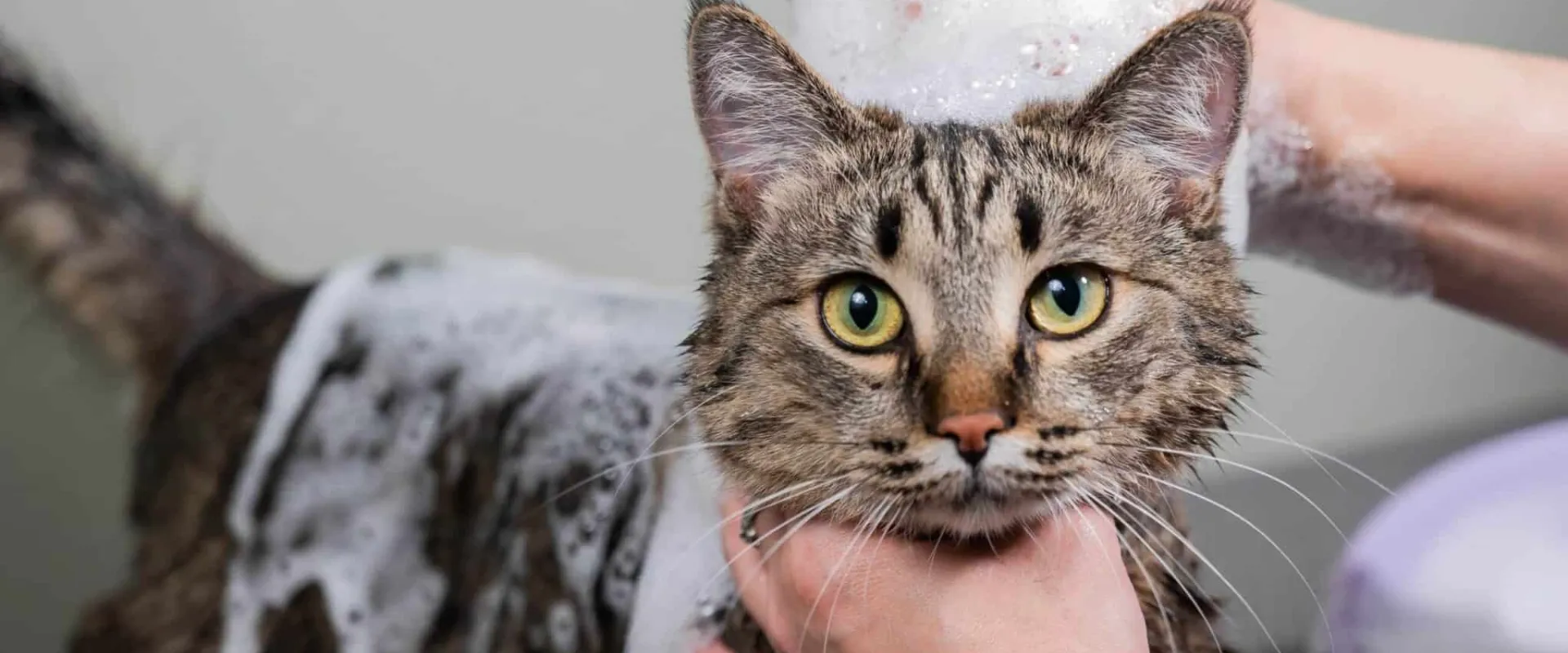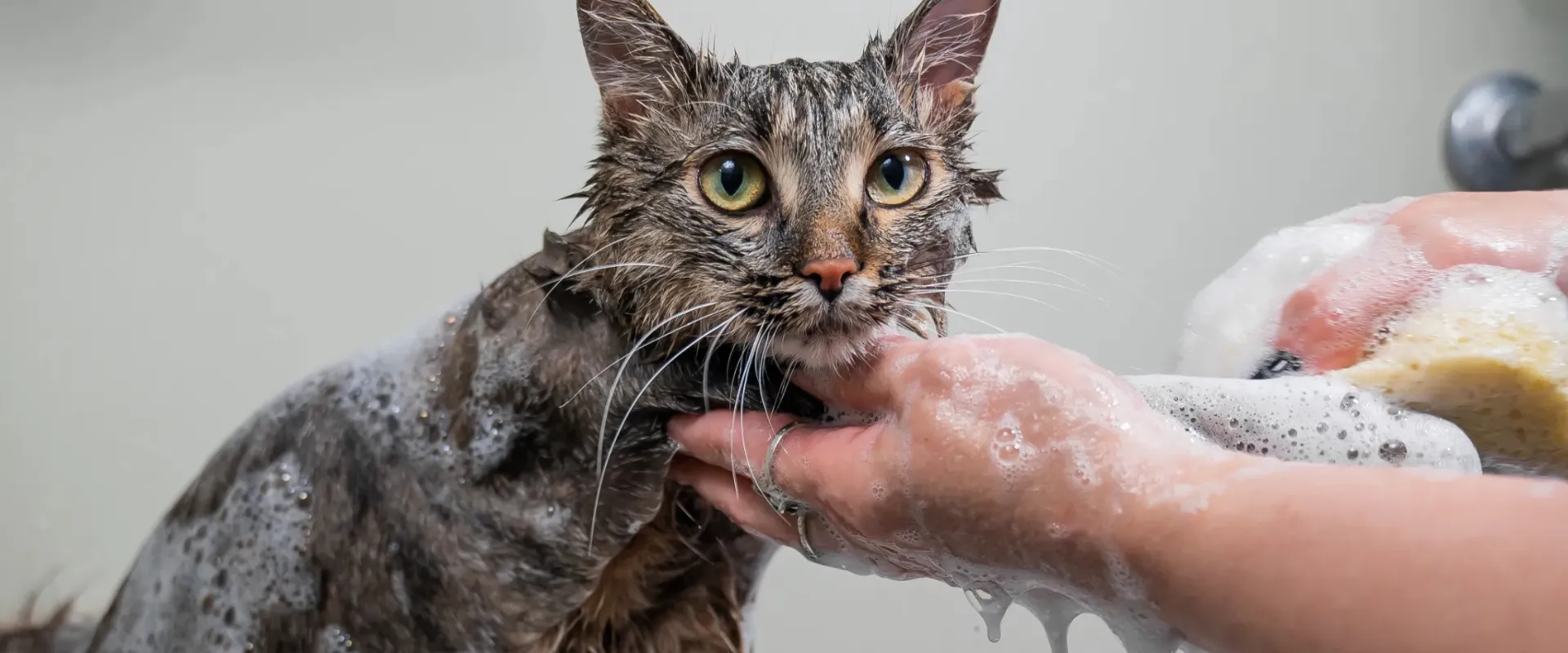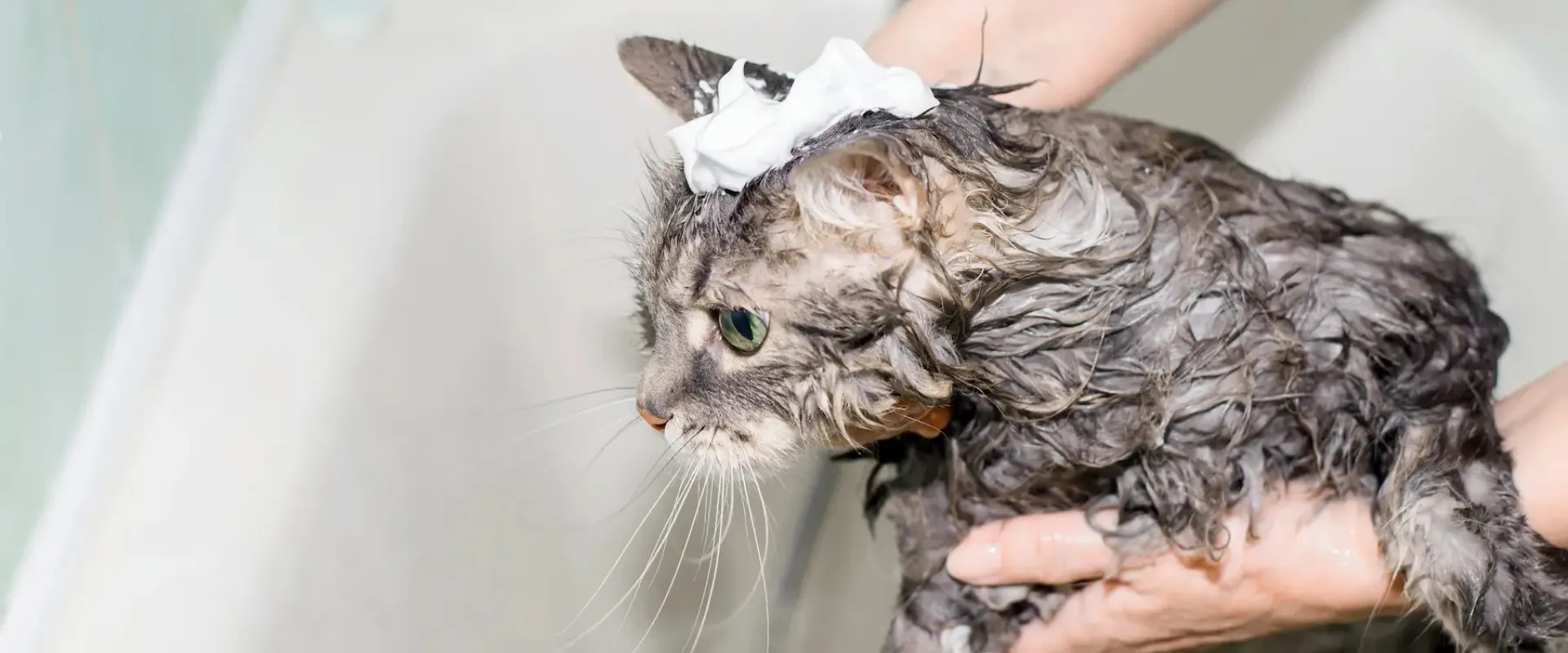Have you ever wondered if you can use dog shampoo on cats when your feline friend needs a bath? Many pet owners face this question, especially when they’re short on supplies or share products between their pets. Grooming your cat properly helps keep them healthy and happy, but selecting the right shampoo is crucial in preventing skin issues. Let’s explore why this matters and how to make safe choices for your cat’s care.
Cats have unique needs when it comes to grooming. Their skin is sensitive, and using the wrong products can cause irritation or discomfort. With so many pet shampoos on the market, it’s easy to feel confused about what’s safe. This guide will break down everything you need to know to keep your cat’s coat clean and their skin healthy, including whether dog shampoo is safe for cats.
If you’re looking to start a mobile pet grooming franchise, understanding these differences can help you provide top-notch care for all your furry clients. By the end of this article, you’ll have clear, practical tips to groom your cat safely and confidently. Let’s get started with the facts!
Why Cat Skin Is Different from Dog Skin
Cat skin is thinner and more delicate than that of dogs. This makes it more prone to irritation from harsh ingredients. Cats also groom themselves by licking their fur, which means they might ingest any shampoo left on their coat. Using products not designed for cats can lead to problems like dry skin or upset stomachs.
Dogs, on the other hand, have thicker skin and different pH levels. Shampoos made for dogs often contain more potent ingredients to tackle dirt and odors. These can be too harsh for a cat’s sensitive skin. Understanding these differences helps you recognize the importance of cat skin care.
When grooming a dog, you may focus on removing heavy dirt or matting. For cats, the focus is on gentle cleaning to avoid stress and skin issues. Always check the label on pet shampoos to ensure they’re safe for your cat’s unique needs.
Is Dog Shampoo Safe for Cats?
Many pet owners ask, “Can you use dog shampoo on cats?” The short answer is no, it’s usually not safe. Dog shampoos are formulated for a dog’s skin pH, which ranges from 6.5 to 7.5. Cats have a more acidic skin pH, around 6.0. Using dog shampoo can disrupt this balance, causing dryness or irritation.
Some dog shampoos contain ingredients like tea tree oil or strong fragrances that can be toxic to cats if ingested during grooming. While a one-time use in an emergency might not cause harm, it’s not a good long-term solution. Choosing a safe shampoo for cats is always the better option to keep your pet comfortable.
If you’re in a pinch and only have dog shampoo, dilute it heavily with water and rinse thoroughly. But for regular baths, stick to products explicitly labeled for cats to avoid risks and keep your pet’s coat shiny and healthy.
Dog Shampoo vs. Cat Shampoo: Key Differences
When comparing dog shampoo vs cat shampoo, the differences come down to formulation. Cat shampoos are gentler, with milder ingredients that match a cat’s skin pH. They’re designed to clean without stripping natural oils, which cats rely on to keep their fur soft and waterproof.
Dog shampoos, by contrast, often include stronger detergents to handle thicker fur and tougher dirt. They might also have flea treatments or deodorizers that aren’t safe for cats. For example, some flea shampoos for dogs contain permethrin, which is toxic to cats.
To make the right choice, read the label carefully. Look for shampoos marked “cat-safe” or “pH-balanced for cats.” This small step in pet grooming business practices can make a big difference in keeping your cat healthy and happy.
How to Choose a Safe Shampoo for Cats
Finding a safe shampoo for cats starts with understanding your cat’s needs. Look for products with natural ingredients like oatmeal or aloe vera, which soothe sensitive skin. Avoid shampoos with artificial fragrances, dyes, or harsh chemicals, such as sulfates.
Check if the shampoo is labeled “cat-specific” or “safe for cats.” These products are tested to ensure they won’t harm your pet. If your cat has allergies or skin conditions, consult your vet for recommendations. They might suggest medicated shampoos for specific issues.
When shopping, consider your cat’s coat type. Long-haired cats might need a detangling formula, while short-haired cats do well with basic cleansing shampoos. Choosing the right product ensures practical cat grooming tips that keep your pet comfortable.
Step-by-Step Guide to Bathing Your Cat
Bathing a cat can feel like a challenge, but with the right approach, it’s manageable. Follow these cat grooming tips to make the process stress-free for both you and your pet:
- Prepare Your Supplies: Gather a cat-specific shampoo, towels, a non-slip mat, and a brush. Have everything ready to avoid leaving your cat mid-bath.
- Brush First: Remove loose fur and mats before the bath to make cleaning easier and prevent tangles.
- Use Lukewarm Water: Fill a sink or tub with a few inches of warm water. Cats dislike extreme temperatures.
- Apply Shampoo Gently: Wet your cat’s fur, then apply a small amount of safe shampoo for cats. Massage it in carefully, avoiding the eyes and ears.
- Rinse Thoroughly: Use clean water to rinse out all shampoo. Leftover residue can irritate their skin or be ingested during grooming.
- Dry Carefully: Wrap your cat in a towel and pat them dry. Avoid hairdryers, as the noise can scare them.
Common Mistakes to Avoid When Grooming Cats
Grooming mistakes can harm your cat’s skin or make them dread bath time. One common error is using human shampoo, which is far too harsh for cats. Even baby shampoo can disrupt their skin’s pH and irritate it.
Another mistake is not rinsing thoroughly. Leftover shampoo can lead to itching or rashes. Always double-check that all products are washed out. Also, avoid bathing too often—cats usually need baths only every few months unless they’re filthy or have skin issues.
For those running a dog grooming business, these tips apply to cats, too. Cats are more sensitive, so take extra care to use gentle products and techniques. Avoiding these mistakes ensures a positive grooming experience.
How Often Should You Bathe Your Cat?
Cats are great at keeping themselves clean, so they don’t need frequent baths. Most cats only need a bath every 2-3 months, or when they get into something messy like mud or oil. Over-bathing can strip their skin of natural oils, leading to dryness.
If your cat has a skin condition or allergies, your vet might recommend more frequent baths with a medicated shampoo. Always follow their advice for cat skin care. For regular grooming, brushing is often enough to keep their coat clean and reduce shedding.
Tips for Stress-Free Cat Grooming
Cats often dislike baths, but you can make grooming easier with a few tricks. Start by getting your cat used to water gradually. Try wiping them with a damp cloth before moving to full baths. This builds trust and reduces anxiety.
Use treats or praise to reward your cat during and after grooming. A calm environment, like a quiet room with no loud noises, also helps. If your cat gets stressed, take breaks and keep sessions short.
FAQs About Cat Grooming and Shampoo Safety
Can you use dog shampoo on cats if it’s labeled “natural”?
Even natural dog shampoos may not be safe. Cats have different skin pH levels, and some ingredients in dog shampoos can irritate their skin or be toxic if ingested. Stick to cat grooming tips that recommend cat-specific products.
What’s the best shampoo for a cat with sensitive skin?
Look for shampoos with soothing ingredients like oatmeal or chamomile. Always choose products labeled as safe shampoo for cats and consult your vet for recommendations.
What’s the difference between dog shampoo and cat shampoo?
Dog shampoo vs cat shampoo comes down to pH balance and ingredients. Cat shampoos are gentler and formulated for their sensitive skin, while dog shampoos are stronger and may contain harmful ingredients for cats.
Conclusion
Grooming your cat the right way keeps their coat shiny and their skin healthy. Asking “Can you use dog shampoo on cats?” shows you care about making safe choices for your pet. By using cat-specific shampoos and gentle techniques, you can avoid irritation and keep bath time stress-free. Regular grooming, done thoughtfully, strengthens the bond between you and your feline friend.
If you’re unsure about the best products or methods for your cat, consider reaching out to a professional groomer for advice. They can guide you on safe practices tailored to your pet’s needs. Your cat deserves the best care, and with these tips, you’re well on your way to giving it!





